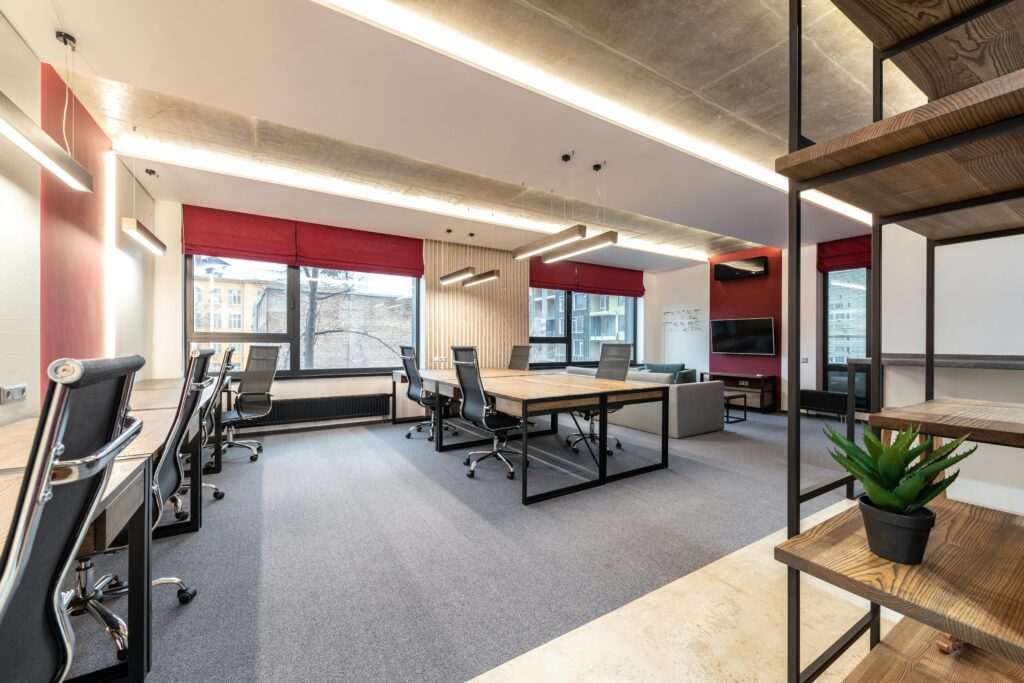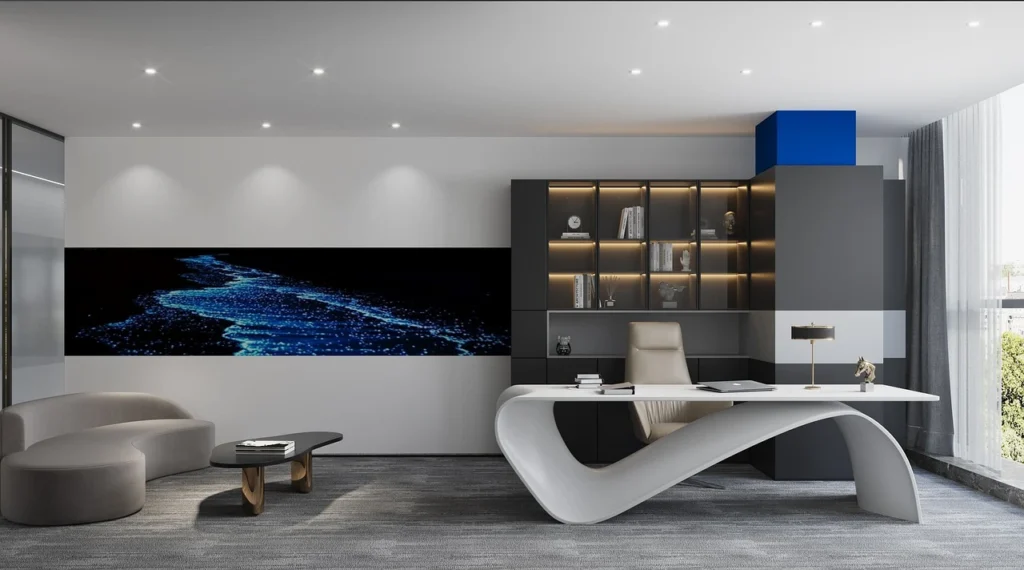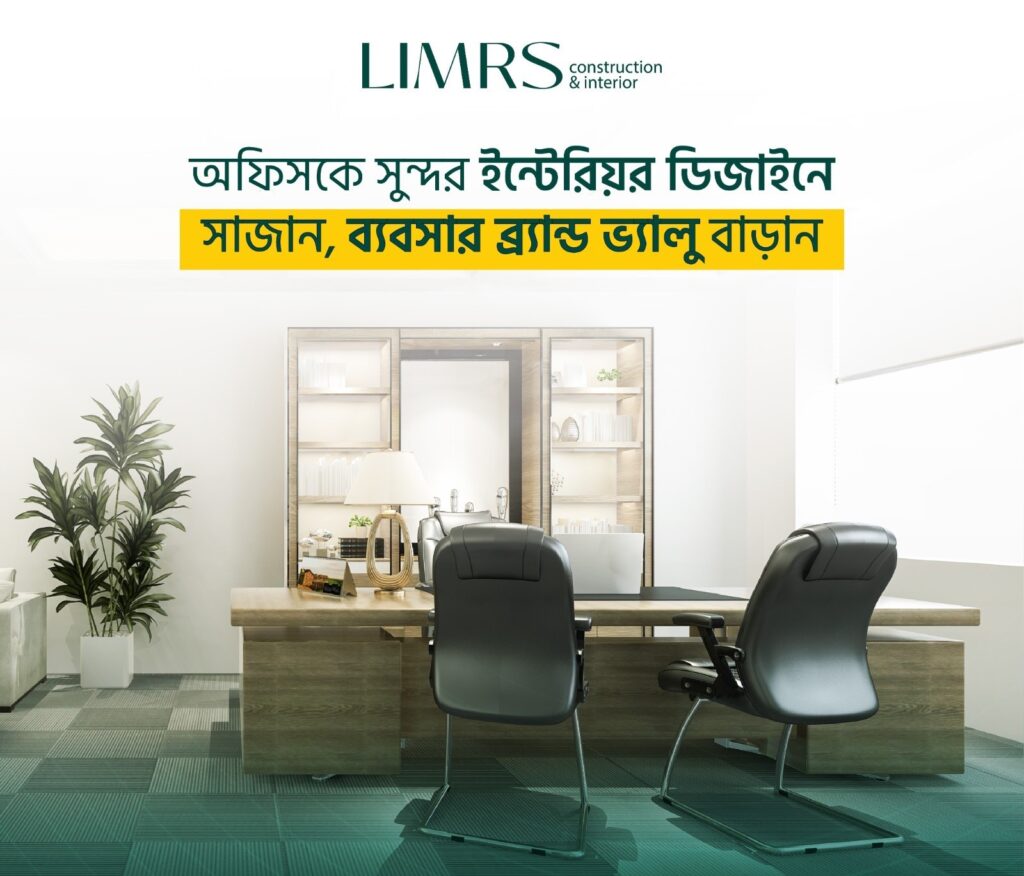Creating a productive and inspiring workspace starts with exceptional office interior design. Whether you’re setting up a new office or revamping an existing one, the right design can boost morale, improve functionality, and make a lasting impression on clients and employees alike.
The design of an office can greatly influences how employees feel and work. A well-designed office can make workers more comfortable, motivated, and focused, which can lead to higher productivity. On the other hand, a poorly designed office can make employees feel stressed, tired, or distracted, which can reduce their efficiency. This article will explore how different aspects of office interior design can impact employee productivity and provide tips on how to create a workspace that boosts performance.
One of the most important factors in office design is the furniture. Employees spend many hours sitting at their desks, so it’s crucial that the furniture is comfortable and supports good posture. Ergonomic chairs and desks can prevent back pain and other health issues that come from sitting in one position for too long. When employees are physically comfortable, they can focus better on their work, which increases productivity.

The Importance of Lighting
Lighting plays a significant role in how well employees can perform their tasks. Natural light is the best option, as it reduces eye strain and boosts energy and mood. If natural light is limited, using bright, soft lighting that mimics daylight can help. Poor lighting can cause headaches, fatigue, and stress, making it harder for employees to concentrate. Ensuring the office has good lighting can make a big difference in productivity.
Color and Productivity
The colors used in an office can have a psychological impact on employees. Different colors can evoke different feelings. For example:
- Blue is often associated with calmness and focus.
- Green is linked to creativity and relaxation.
- Yellow can boost energy and happiness.
Choosing the right colors for an office can create a positive environment that encourages productivity. Avoiding overly bright or dull colors is key to maintaining a balanced and effective workspace.
Air Quality and Ventilation
Fresh air quality is essential for maintaining health and productivity. Poor ventilation can lead to stuffy air, which can cause discomfort and reduce the ability to focus. Ensuring that the office has proper ventilation and air circulation can help keep employees alert and energetic. Air purifiers or indoor plants can also improve air quality, making the environment more pleasant to work in.
Noise Control
Excess noise can be a major distraction in the workplace. Loud or constant noise can make it difficult for employees to concentrate, leading to lower productivity. There are several ways to control noise in an office:
- Soundproofing walls or using noise-canceling materials can reduce the impact of outside noise.
- White noise machines or soft background music can mask distracting sounds.
- Quiet zones can be designated for employees who need to focus on tasks without interruption. By managing noise levels, employers can create a more peaceful and productive work environment.

Open vs. Closed Spaces
The layout of the office, whether open or closed, can affect how employees interact and work. Open spaces encourage collaboration and communication, which can be beneficial for team projects. However, they can also lead to distractions. Closed spaces or private offices provide a quiet environment for focused work. A combination of both open and closed spaces allows employees to choose the environment that best suits their tasks, leading to better productivity.
Personalization and Decoration
Allowing employees to personalize their workspaces can make them feel more comfortable and happier. Simple decorations like family photos, plants, or personal items can make the office feel more welcoming. When employees feel at ease in their environment, they are likely to be more motivated and productive. Encouraging personalization also shows that the company values its employees, which can boost morale.
Bringing Nature Indoors
Incorporating elements of nature into the office, such as plants, natural light, or water features, can have a positive impact on productivity. Nature has a calming effect and can reduce stress levels. Indoor plants, in particular, can improve air quality and add a refreshing touch to the office. Creating a connection to nature within the workspace can make employees feel more relaxed and focused, leading to better performance.
Why Office Interior Design Matters
Your office environment directly impacts your team’s productivity and well-being. A well-designed space combines aesthetics and functionality, ensuring every corner serves a purpose. From ergonomic furniture to proper lighting and thoughtful layouts, smart office interior design makes your workspace inviting and efficient.
Key Elements of Office Interior Design
- Ergonomic Furniture: Invest in chairs and desks that promote good posture for comfort during long work hours.
- Lighting: Incorporate natural and artificial lighting to create a bright, welcoming atmosphere.
- Color Schemes: Use colors that align with your brand and evoke the right emotions. Blues enhance focus, while greens promote calmness.
- Space Utilization: Maximize your office layout to balance open areas, private workspaces, and meeting zones.
- Greenery: Add plants to improve air quality and bring a natural touch to your office.
Benefits of Professional Office Interior Design
Professional interior designers understand how to blend creativity and practicality. They help you choose the right furniture, colors, and layouts that align with your business goals. Expert office interior design can enhance team collaboration, reduce stress, and reflect your company’s brand identity.
Final Thoughts
Office interior design is more than just aesthetics; it directly influences how employees feel and work. By focusing on factors like comfort, lighting, color, air quality, noise control, and layout, employers can create a workspace that enhances productivity. A well-designed office not only boosts employee efficiency but also contributes to their overall well-being, making it a valuable investment for any company.

Bottom Line
We hope you’ve gotten a better idea about how office interior design can affect employee productivity. Remember, the more specific your goals are, the easier it will be to find what you need. Now if you are thinking about designing your office interior? —Then get in touch with LIMRS Construction & Interiors, we can help you design your office just the way you want it. We ensure excellent air quality, noise control, and a thoughtful mix of open and private spaces to suit various work styles.
FAQs About Office Interior Design
Q: Why is office interior design important?
It enhances employee productivity, creates a positive work environment, and leaves a great impression on clients.
Q: What factors should I consider for office interior design?
Focus on furniture, lighting, color schemes, space optimization, and branding elements.
Q: Can office interior design boost productivity?
Yes, a well-organized and aesthetically pleasing office can improve focus, creativity, and overall efficiency.
Q: How do I design a small office space?
Use multi-functional furniture, neutral colors, and vertical storage solutions to maximize the space.
Q: Is it worth hiring a professional designer for office interiors?
Yes, professionals ensure the design meets your business needs while creating a stylish, functional workspace.
Further Reading: Top 10 Interior Design Firms in Dhaka, Bangladesh

